[Paper Review] Recurrent back-projection network for video super-resolution
Recurrent back-projection network for video super-resolution
Haris, Muhammad, Gregory Shakhnarovich, and Norimichi Ukita. “Recurrent back-projection network for video super-resolution.” Proceedings of the IEEE Conference on Computer Vision and Pattern Recognition. 2019.
Abstract
- recurrent encoder-decoder module을 사용하여 연속적인 video frames에서 spatial context와 temporal context를 통합시킴
multi-frame 정보와 target frame의 single frame super-resolution path를 융합 (MISR+SISR)
- 이전 연구들은 frames이 쌓이거나 warping하면서 함께 풀링되었으나, RBPN은 모든 context frame을 분리된 정보로 처리
이러한 정보들은 반복적인 refinement framework로 결합됨 (MISR의 back-projection에서 영감)
이는 명시적으로 프레임을 정렬하는 것이 아니라 target에 대해 추정된 inter-frame motion을 명시적으로 나타냄으로써 도움이 됨(??)
- 새로운 video super-resolution benchmark 제안
큰 규모의 평가를 진행하며 다른 motion regimes의 videos를 고려함
Introdection
-
SR의 3가지 분야 : SISR, MISR, VSR
-
Single Image Super-Resolution
video SR을 SISR 처럼 독립적으로 처리하면 다른 frames에서 얻을 수 있는 정보(missing details)를 버림
- Multi-frame Image Super-Resolution
다른 frames에서 이용 가능한 정보(missing details)를 target frame을 복원시키기 위해 융합시킴
frames은 독립적으로 alignment를 맞추기 때문에 temporal 정보를 이용하기 어려움 (difficulty in the precise alignment)
- Video Super-Resolution
1) The frame concatenation approach : 네트워크에서 많은 frames이 동시에 처리되면서 학습에 어려움이 있음
2) RNNs : 작고 큰 변화를 공동으로 modelling 하기 어려움
- DBPN : Deep Back-Projection Networks
MISR에서의 “back-projection”에서 영감을 얻음
Back-projection : target image와 그에 해당하는 image set 사이의 error인 residual image를 반복적으로 계산 (residuals은 resolution을 향상시키기 위해 target image로 back-projection)
multiple residuals은 target frame과 다른 frames 간 작고 큰 변화를 독립적으로 representing 할 수 있음 (기존 RNNs 한계를 극복)
- back-projection을 Deep SISR(오직 하나의 LR image로 HR 생성)로 확장
- multiple up- and down-sampling layers를 통해 반복적으로 조정(refine)하면서 high-resolution feature map 생성
- VSR을 위해 MISR back-projection과 DBPN의 장점을 통합시킴
DBPN architecture
- 다른 video frames을 original MISR back-projection에서 LR images 처럼 사용
- missing detials을 representing 하는 HR feature maps을 up- and down- sampling 과정들에 의해 반복적으로 정제(refine)하는 아이디어를 활용 (SR quality 향상을 위해)
- Contributions
1) Integrating SISR and MISR in a unified VSR framework
SISR과 MISR은 다른 sources에서 missing details을 추출
Iterative SISR (DBPN) : target frame의 details을 나타내는 다양한 feature maps 추출
MISR : 다른 frames로부터 다양한 feature maps의 집합을 제공
다른 sources는 RNN을 통해 temporal 순서로 반복적으로 update
2) Back-projection modules for RBPN
back-projection을 통해 SISR와 MISR paths에서 추출된 details을 통합시키기 위해 기존의 encoder-decoder mechanism을 발전시킴
network는 모든 context가 개별적으로 계산되기 때문에 large gap을 이해할 수 있음 (I_t와 I_t-n 사이의 gap??)
이전의 연구는 공동으로 계산되었음
분리된 context는 RBPN에서 중요한 역할
3) Extended evaluation protocol
기존의 standard dataset(Vid4와 SPMCS, 많은 motion을 담고 있지 못함)에 추가적으로 Vimeo-90k를 사용하여 평가
Relate Work
- 2.3 Deep Video Super-Resolution
(a) Temporal Concatenation
input frames을 함께 concatenation 하면서 sequence에 대한 다양한 motion regimes을 나타내지 못함 (motion 정보를 다루지 못함)
(b) Temporal Aggregation
dynamic motion problem을 해결하기 위해, 다양한 motion regimes을 다루는 multiple SR inferences 제안
마지막 layer에서 모든 branch의 output을 concatenation함
여전히 많은 input frames을 concatenation -> difficulty in global optimization
(c) RNNs
[13]에서 처음으로 제안되었지만, 작은 network capacity를 가졌고 frame align step이 없었음
더 나아가 motion compensation module과 convLSTM layer를 사용한 방식이 제안됨 [30]
최근에는 이전 예측 frame(HR)을 다음 frame 예측에 사용하는 효율적인 many-to-many RNN 제안 [27]
기존 RNN 한계 : 반복적인 feedback connection은 이웃 frames 간 temporal smoothness를 이용하지만, 모든 frames에서 작고 큰 변화를 공동으로 modelling하기 어려움
Recurrent Back-Projection Networks
- 3.1 Network Architecture
1) Initial feature extraction
projection module에 들어가기 전에 I_t를 LR feature tensor L_t로 mapping
모든 이웃 frame(I_t-1 ~ I_t-n)에 대해 미리 계산된 dense motion flow map F_t-k(I_t-k와 I_t 사이의 flow map)을 I_t-k, I_t와 concatenation
motion flow map의 효과 : projection module이 frame 사이의 missing details을 추출하는 것을 도움
2) Multiple Projections
SISR과 MISR paths를 통합시키면서 target frame에서 missing details을 추출하여 refined HR feature tensor 생성
3) Reconstruction
모든 frame에 대한 HR features를 concatenation하여 reconstruction module로 넣어주어 최종 SR output을 얻음
하나의 convolutional layer로 이루어짐
- 3.3 Multiple Projection
RBPN에서 multiple projection stage는 encoder-decoder modules의 반복적인 chain 구조를 이용
encoder : 특정 이웃 frame에 대한 projection에서 HR feature를 생성
decoder : 각각의 HR feature를 다음 encoder module의 input으로 넣기 위해 decoding
The encoder module
- 3.3 Interpretation
3-frame video를 위한 RBPN pipeline


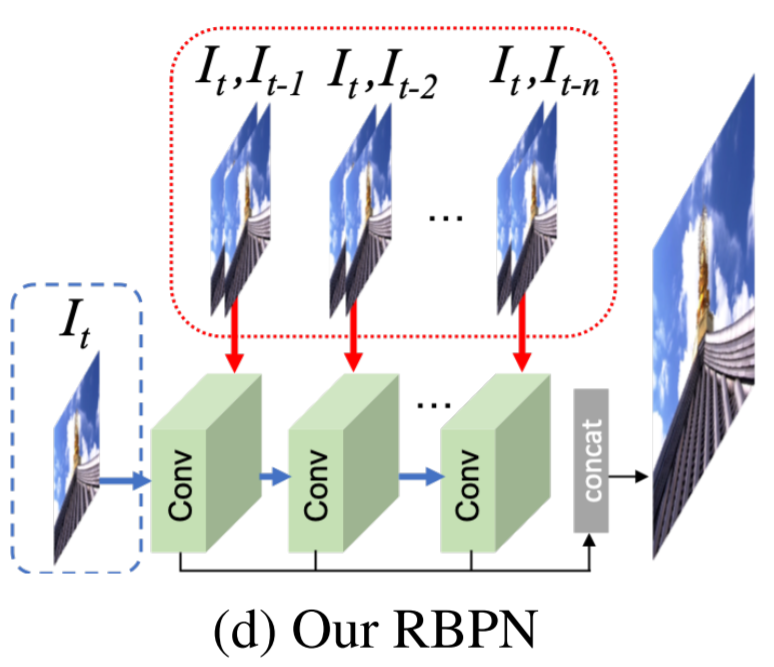

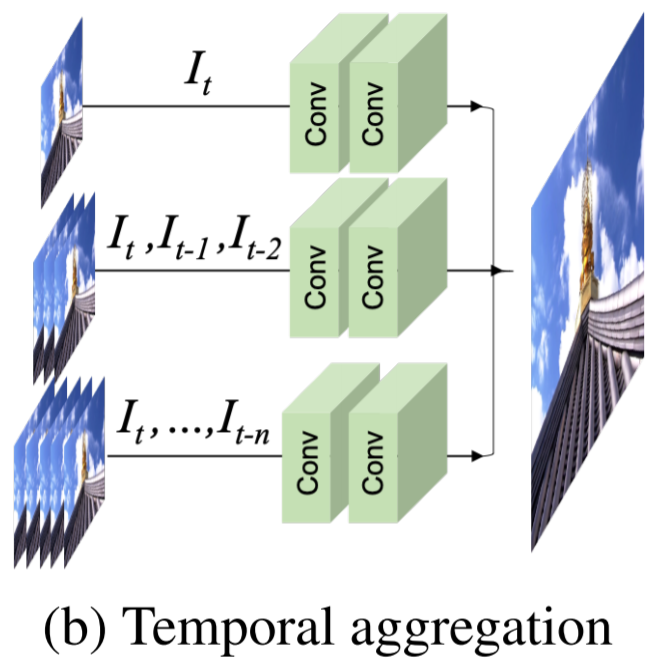
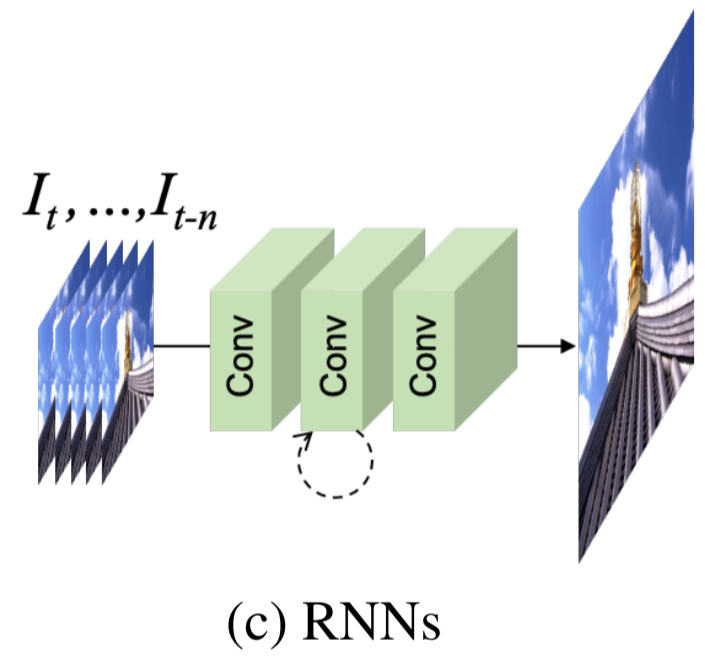

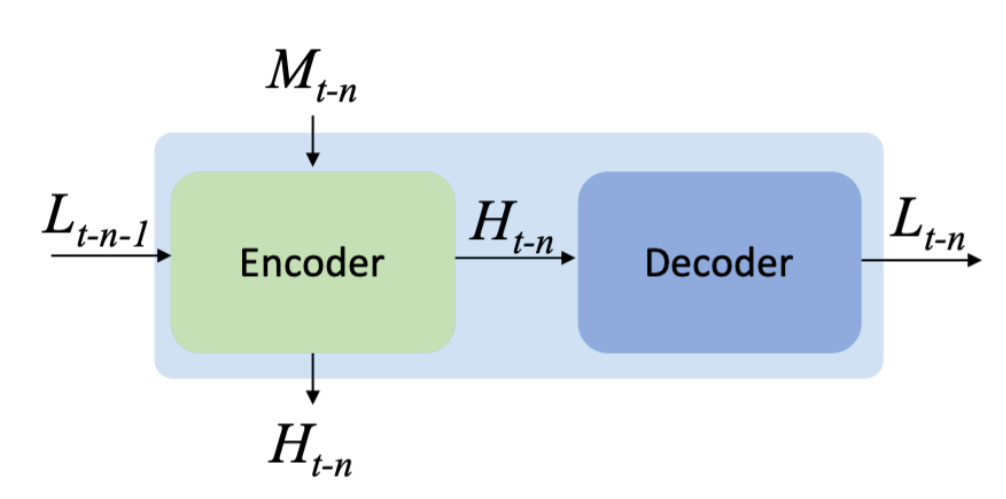

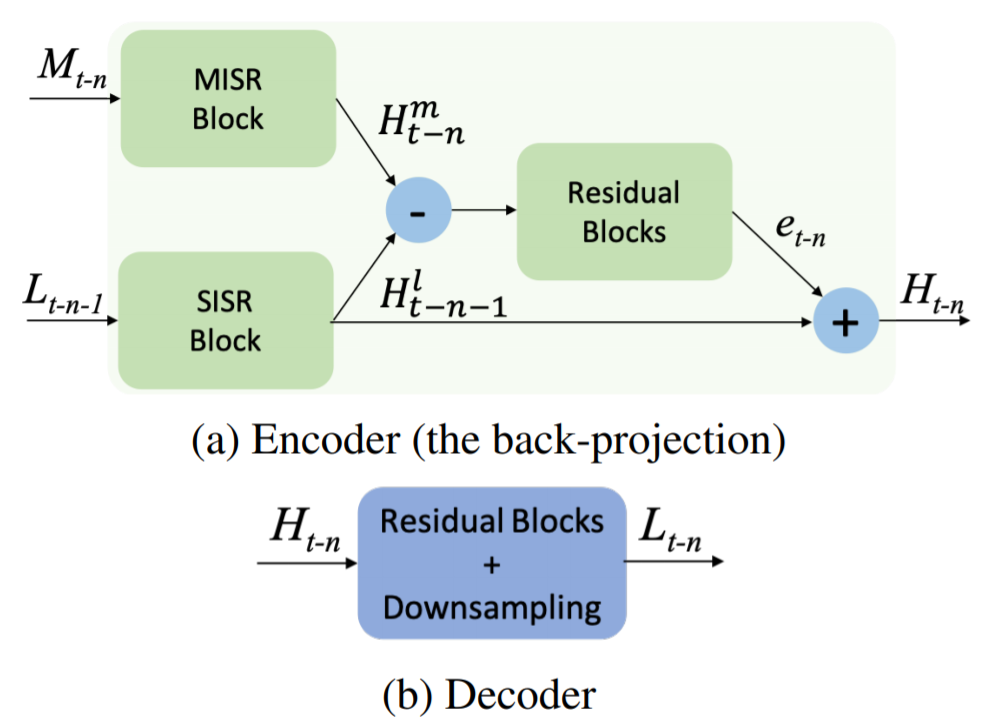
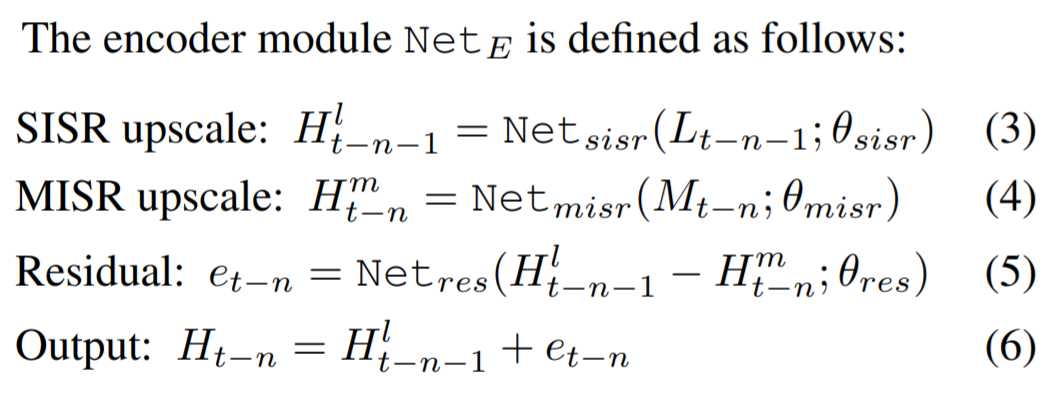
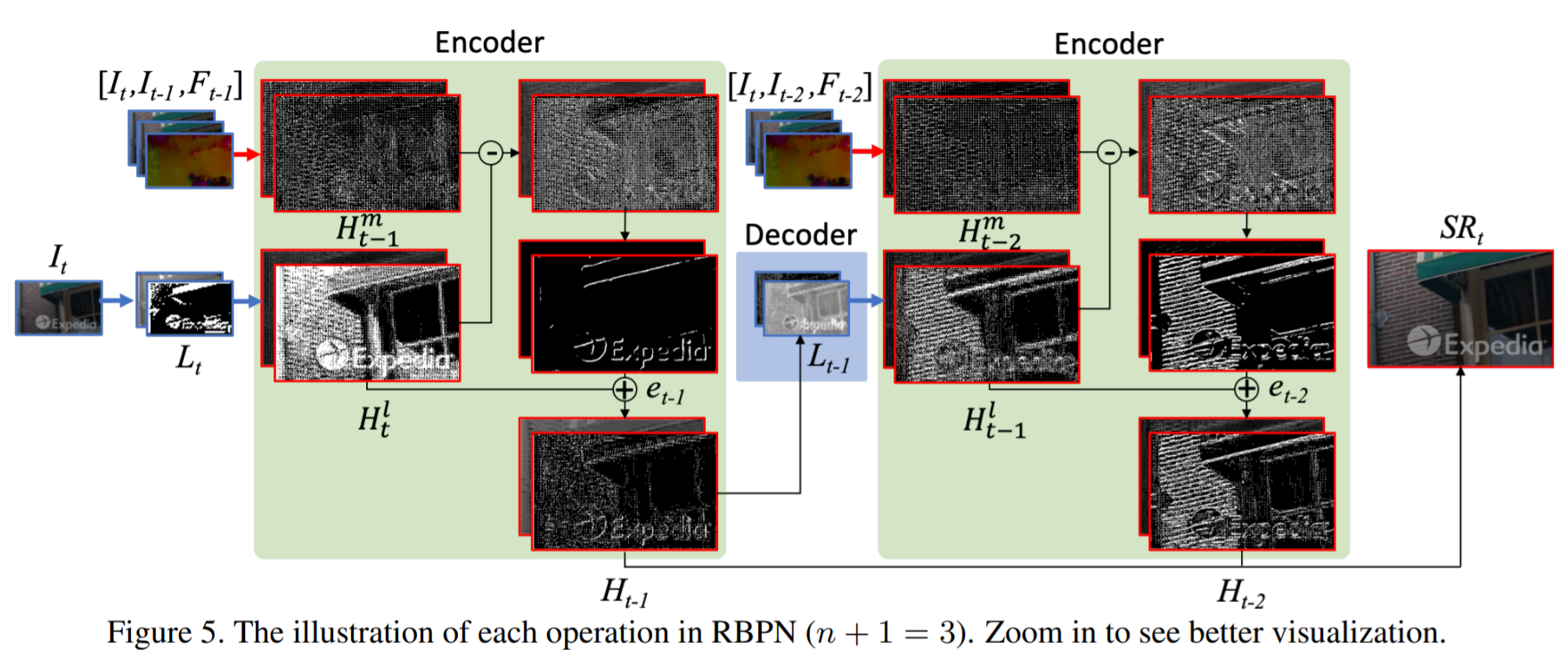
Leave a comment